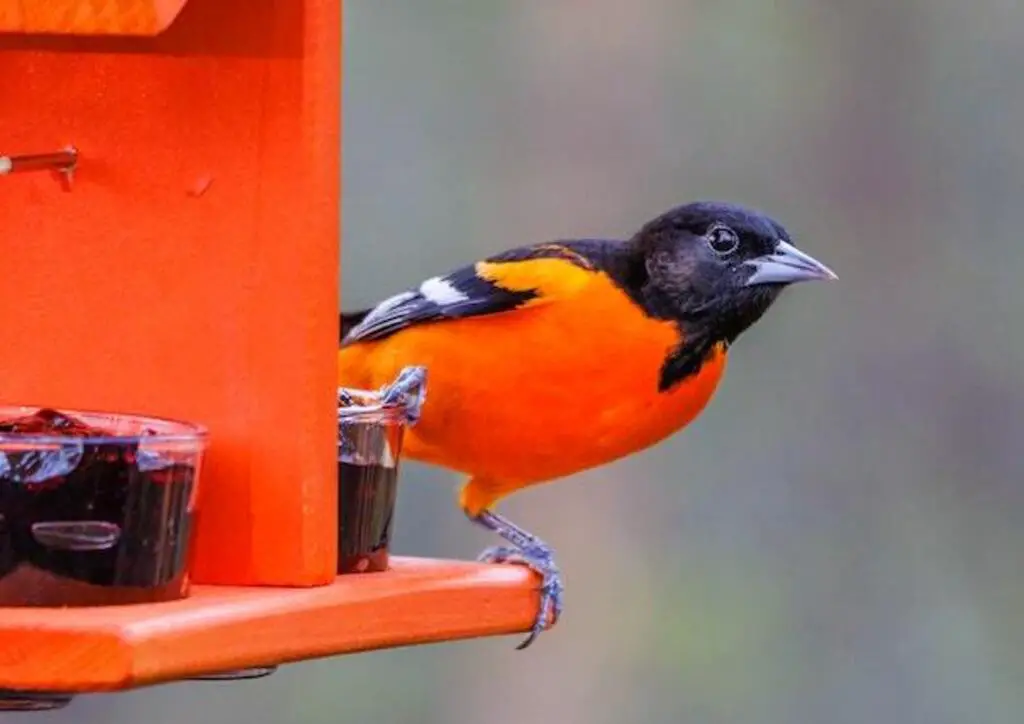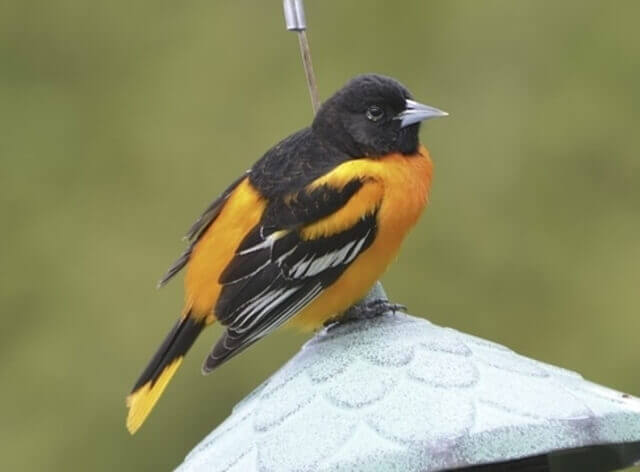Baltimore Orioles are a common sight in many backyards across North America, known for their striking orange and black plumage and cheerful song.
While these birds primarily feed on insects and fruits, there is a popular belief that they also enjoy feeding on sugar water.
This has led many bird enthusiasts to wonder whether it is safe and beneficial to offer sugar water to Baltimore Orioles and what impact it may have on their diet and health.
In this article, we will explore the diet of Baltimore Orioles and the potential benefits and risks of offering sugar water as a food option.
We will also discuss the factors that should be considered before offering sugar water, how to prepare it, and how to safely feed Baltimore Orioles.
Additionally, we will examine other food options for Baltimore Orioles and provide tips on observing them in the wild.
By the end of this article, you will have a better understanding of the relationship between Baltimore Orioles and sugar water, and whether it is a suitable addition to their diet.
Table of Contents
- 1 Do Baltimore Orioles Drink Sugar Water?
- 2 Baltimore Orioles’ Diet
- 3 Sugar Water as a Food Option
- 4 Factors to Consider Before Offering Sugar Water
- 5 How to Prepare Sugar Water
- 6 Feeding Baltimore Orioles Safely
- 7 Other Food Options for Baltimore Orioles
- 8 Observing Baltimore Orioles in the Wild
- 9 Conclusion: Baltimore Orioles and Sugar Water
- 10 Frequently Asked Questions
- 10.1 Are Baltimore Orioles attracted to other types of sweet foods besides sugar water?
- 10.2 How often should sugar water be offered to Baltimore Orioles?
- 10.3 What are the potential negative effects of offering sugar water to Baltimore Orioles?
- 10.4 Can feeding Baltimore Orioles sugar water attract other unwanted animals to the area?
- 10.5 How can you tell if a Baltimore Oriole is sick or malnourished?
- 11 Overall Conclusion
- 12 Author
Do Baltimore Orioles Drink Sugar Water?
Yes, Baltimore Orioles are attracted to sugar water feeders. They have a preference for nectar-rich foods, and offering them a sugar water solution can entice them to visit your feeders.
It provides them with a convenient and accessible energy source, especially during their migration and breeding seasons.
Use proper solutions: Ensure that the sugar water solution is made with the right proportions of sugar and water.
A common recipe is mixing 1 part white granulated sugar with 4 parts boiled water. Avoid using honey, artificial sweeteners, or red dye solutions, as they can be harmful to the birds.
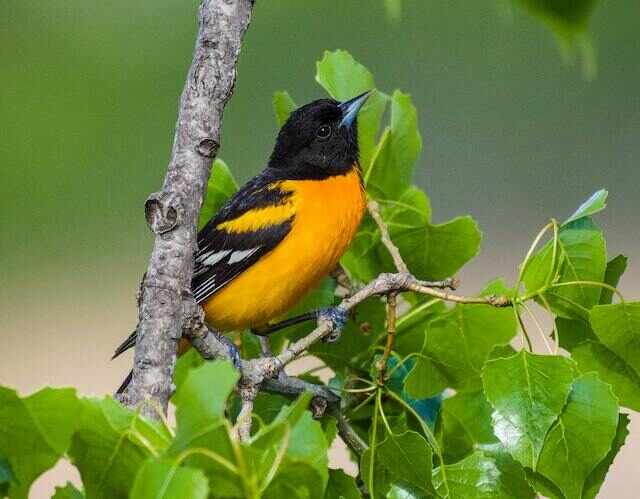
Baltimore Orioles’ Diet
The dietary habits of Baltimore Orioles have been extensively studied and documented, revealing a fascinating range of food sources that are crucial for their survival and well-being.
These birds have a diverse diet that changes with the seasons and their migration patterns.
During the summer months, Baltimore Orioles feed on a variety of insects, fruits, and nectar from flowers.
They are particularly drawn to fruit trees, such as cherry and apple trees.
In the fall, as they prepare for their long journey south, Baltimore Orioles shift their diet to include more fatty foods, such as insects and caterpillars, to build up energy reserves for the trip.
Oriole nesting habits also impact their diet, as they require protein-rich foods to feed their young.
While sugar water is often used as a food option for attracting Baltimore Orioles to bird feeders, it is not a natural part of their diet.
Instead, it should be viewed as a supplement to their diet, rather than a replacement for their natural food sources.
Sugar Water as a Food Option
Sugar water has been found to be a viable option for nourishment among certain avian species. Baltimore Orioles have been known to feed on nectar from flowers, which is similar in composition to sugar water.
However, offering sugar water as a food option for these birds comes with benefits and drawbacks.
On one hand, sugar water provides a quick source of energy for the birds, which can be especially important during migration.
However, consuming too much sugar water can also lead to health issues and a reliance on this artificial food source.
Additionally, offering sugar water can have an impact on migratory behavior, as it may encourage birds to stay in one location rather than continuing their journey.
Therefore, before offering sugar water as a food option for Baltimore Orioles, it is important to consider factors such as the bird’s natural diet, the availability of other food sources, and the potential long-term effects on their health and behavior.
Factors to Consider Before Offering Sugar Water
Before offering sugar water as a food option for avian species, it is crucial to take into account various factors, such as their natural diet, the availability of alternative food sources, and the potential long-term effects on their health and migratory behavior.
Factors to consider include the nutritional value of sugar water compared to their natural food sources, as well as the potential for overconsumption and resulting health issues.
Additionally, offering sugar water as a food source may draw birds away from their natural habitats and disrupt their migratory behavior.
However, there are also benefits to offering sugar water, such as providing a supplemental food source during times of food scarcity or attracting birds to a specific area for observation.
Ultimately, the decision to offer sugar water should be made on a case-by-case basis, taking into account the specific needs and behaviors of the bird species in question.
The subsequent section will discuss how to prepare sugar water for avian consumption.
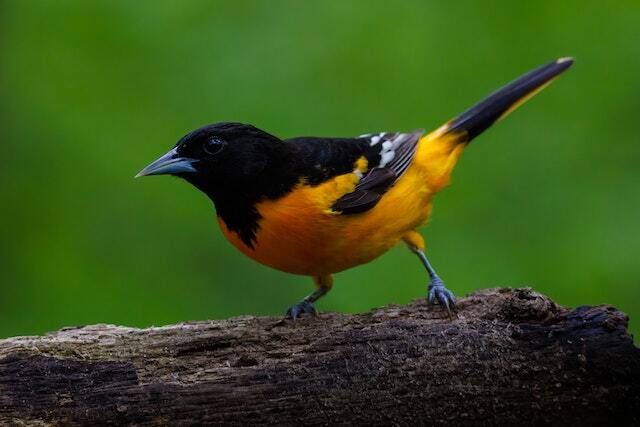
How to Prepare Sugar Water
Preparing a suitable sugar solution for avian consumption involves choosing the right type of sugar, determining the appropriate concentration, and ensuring the cleanliness of the feeder.
The benefits of sugar water include providing birds with a quick source of energy, especially during migration or breeding season.
To prepare sugar water, use granulated white sugar, as it is easily digestible and does not contain additives.
Mix one part sugar to four parts water, and boil the mixture for a few minutes to ensure that the sugar dissolves completely. Cool the mixture and fill the feeder, ensuring that it is clean and free of mold or bacteria.
Alternatively, one can use nectar, which is a natural sugar solution commonly found in flowers. However, nectar requires frequent replacement, as it can ferment easily and cause harm to birds.
It is important to note that sugar water should not be the sole source of nutrition for birds and should be offered in moderation.
Feeding Baltimore Orioles safely involves providing a variety of food sources and avoiding the use of pesticides or chemicals in the feeding area.
Feeding Baltimore Orioles Safely
Feeding Baltimore Orioles requires careful consideration of the feeder types and their placement. Recommended feeder types for Baltimore Orioles include fruit dishes and nectar feeders.
These feeders should be placed in open spaces, away from windows, and at a height of about 6-8 feet from the ground.
Following these recommendations can help ensure the safety and well-being of these beautiful birds.
Recommended Feeder Types
The selection of appropriate feeders can greatly impact the success of attracting and sustaining various bird species, as different types of feeders cater to specific feeding behaviors and preferences.
Feeder design plays a crucial role in attracting other bird species, but when it comes to Baltimore Orioles, there are specific feeder types that are recommended.
Oriole feeders are designed to hold nectar, fruit, and jelly, and usually feature bright colors such as orange and yellow to attract these birds.
They also have larger feeding ports and perches to accommodate the Orioles’ unique feeding behavior.
Additionally, some oriole feeders have bee guards to prevent bees and other insects from stealing the nectar.
By providing Orioles with the appropriate feeder types, bird enthusiasts can increase their chances of attracting and sustaining these beautiful birds in their backyard.
As such, it is important to consider the feeder design when attempting to attract Baltimore Orioles to your yard.
The next step is to consider the placement of feeders to optimize the effectiveness of bird feeding.
Placement of Feeders
Optimizing the placement of oriole feeders is crucial for attracting and sustaining these birds in backyard environments.
Feeder placement tips include hanging them in a shady area to prevent the sugar water from evaporating too quickly, positioning them away from windows to prevent bird collisions, and placing them at a height of 5-6 feet to prevent predators from accessing the feeder.
Additionally, it is important to regularly clean and refill the feeder with fresh sugar water to keep it attractive to orioles.
It is worth noting that attracting other bird species can be a positive outcome of oriole feeder placement, as different species often coexist and feed together.
However, it is important to ensure that the feeder is designed specifically for orioles to prevent other species from consuming the sugar water.
In the subsequent section about other food options for baltimore orioles, we will explore additional ways to attract and sustain these beautiful birds in backyard environments.
Other Food Options for Baltimore Orioles
Various alternative food sources are available for Baltimore orioles, expanding their dietary options beyond standard nectar-based diets.
In addition to sugar water, birdseed mixtures and fruit options can also be offered to these birds.
Orioles have a strong preference for fresh fruit, such as oranges, grape jelly, and sliced grapes, which can be placed on platform feeders or skewered on spikes.
Providing a variety of food options can attract a wider range of birds and encourage them to visit feeders more frequently.
It is important to note that orioles require a high-protein diet during breeding season, which can be fulfilled by offering mealworms or suet.
By providing multiple food sources, birdwatchers can observe a diverse range of bird species and their feeding behaviors in the wild.
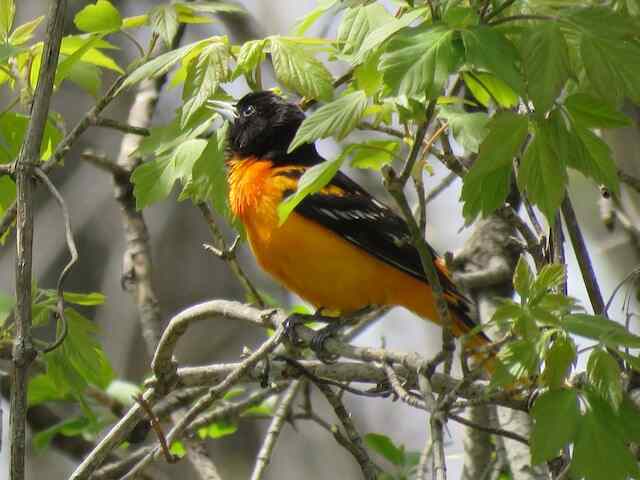
Observing Baltimore Orioles in the Wild
While exploring the various food options for Baltimore Orioles, it’s crucial to understand their natural habitat and habits.
Observing Baltimore Orioles in the wild can provide an insight into their feeding habits, migration patterns, and other behaviors.
Bird watching enthusiasts can set up feeders with different types of food and observe the Orioles’ preferences.
Moreover, the Orioles’ migration patterns can give insight into their food preferences at different times of the year.
Observing their feeding and migration habits can help bird watchers better understand the Orioles’ diet and feeding needs.
Bird watching can help understand the Orioles’ food preferences.
Setting up feeders with different types of food can provide insight into their diet.
Understanding the Orioles’ migration patterns can help understand their feeding habits.
Observing the Orioles in their natural habitat can provide valuable information about their behavior.
Transitioning to the next section, understanding the natural habitat and feeding habits of Baltimore Orioles can help us better understand their dietary needs and preferences, including their interest in sugar water.
Conclusion: Baltimore Orioles and Sugar Water
Understanding the role of sweet nectar in the natural diet of birds can provide valuable insight into how it may attract and benefit Baltimore Orioles in their feeding habits.
The controversy surrounding the use of sugar water as a supplement for Baltimore Orioles has been widely debated amongst birdwatchers and ornithologists.
Some argue that providing sugar water may disrupt the natural feeding patterns of the birds, while others believe it can be a helpful supplement during migration periods.
To understand the potential benefits of sugar water, it is important to consider the migration patterns of Baltimore Orioles.
These birds typically migrate from Central America and northern South America to North America in the spring, and return in the fall.
During this time, they require high-energy foods to fuel their long journeys.
While they primarily feed on insects and fruit, the addition of sugar water may provide a necessary boost of energy during the migration period.
To provide an emotional connection to this topic, a table can be used to showcase the potential benefits and drawbacks of sugar water for Baltimore Orioles.
Despite the ongoing debate, it is important to continue researching the effects of sugar water on these birds to ensure their natural feeding patterns and migration routes are not disrupted.
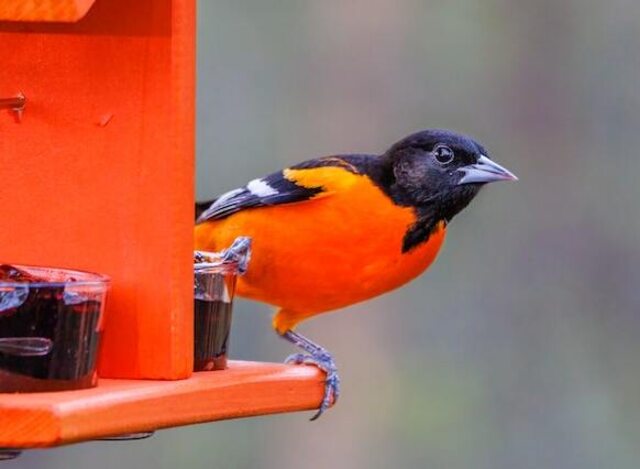
Frequently Asked Questions
Are Baltimore Orioles attracted to other types of sweet foods besides sugar water?
Baltimore orioles are known for their love of sweet foods, particularly sugar water. However, research suggests that they are also attracted to alternative foods, such as natural nectar found in flowers.
Comparing sugar water to other sweeteners, it was found that orioles prefer natural nectar over sugar water. This interesting statistic highlights the diversity of food preferences among these birds.
Additionally, it implies that orioles have a natural inclination towards consuming food that is readily available in their environment.
Despite their love for sugar water, orioles are not limited to this single source of sweet food.
This information is not only informative, but also engages the audience by presenting a new perspective on the food preferences of these birds.
It encourages further exploration of alternative foods that may attract these fascinating creatures.
How often should sugar water be offered to Baltimore Orioles?
Frequency recommendations for offering sugar water to Baltimore Orioles can vary depending on a number of factors, such as the availability of other food sources and the time of year.
Generally, it is recommended to offer sugar water in the spring and summer months, as this is when the birds typically migrate to breeding grounds and require more energy.
However, it is important to avoid overfeeding and to offer alternatives to sugar water, such as fruit and nectar, to ensure a balanced diet. Additionally, it is important to clean feeders regularly to prevent the spread of disease.
Ultimately, providing a variety of food options and monitoring feeding frequency can help attract and sustain a healthy population of Baltimore Orioles.
What are the potential negative effects of offering sugar water to Baltimore Orioles?
Offering sugar water to Baltimore Orioles may have potential risks. While the birds may drink the solution, it is not their natural food source and may lead to health issues such as obesity, diabetes.
Additionally, the sugar water may attract unwanted insects and animals to the feeding area.
Alternative options for feeding Baltimore Orioles include offering natural nectar from flowers, fruit slices, or jelly. These options provide a more balanced diet and are closer to their natural food sources.
Providing a diverse range of food options can also attract a wider variety of bird species to the feeding area, enhancing the overall bird watching experience.
Can feeding Baltimore Orioles sugar water attract other unwanted animals to the area?
Feeding Baltimore orioles sugar water can attract other unwanted animals to the area. This can be detrimental to wildlife preservation efforts and the overall ecosystem.
Bird feeding etiquette suggests that it is important to consider the potential impact of feeding on the environment and to make informed choices.
While providing food for birds can be an enjoyable activity, it is important to do so responsibly and with consideration for the larger ecological picture.
By following best practices for bird feeding, such as using appropriate feeders and avoiding overfeeding, it is possible to support bird populations without harming other wildlife or the environment.
How can you tell if a Baltimore Oriole is sick or malnourished?
Identifying illness and nutritional deficiencies in Baltimore orioles is essential for effectively managing their health in captivity or in the wild.
Common signs of illness include lethargy, lack of appetite, abnormal droppings, and respiratory issues.
Nutritional deficiencies can often manifest as feather abnormalities, such as discoloration or reduced plumage quality.
In addition, malnourished birds may exhibit behaviors such as begging or seeking out human-provided food sources.
It is important to consult with a veterinarian or avian specialist if illness or malnutrition is suspected, as treatment options can vary depending on the underlying cause.
Regular monitoring of the bird’s weight, behavior, and physical appearance can aid in early detection of health issues.
Overall Conclusion
In conclusion, Baltimore Orioles have a diverse diet that includes insects, fruits, and nectar. While sugar water can be a suitable food option for the birds, it should not replace their natural diet.
Factors such as hygiene, frequency of feeding, and location of feeders should be considered before offering sugar water to the birds.
To prepare sugar water, it is essential to use a clean and sterile container and to mix the solution in the right proportions.
Feeding the birds safely requires avoiding overcrowding at feeders and regular cleaning of the feeding stations to prevent the spread of diseases.
Overall, observing Baltimore Orioles in their natural habitat can be a fascinating experience.
While sugar water can be a convenient food option for bird enthusiasts, it is crucial to remember that the birds have a diverse diet that includes various insects, fruits, and nectar.
Providing a balanced diet and a clean feeding environment can help promote healthy populations of the birds in the wild.

